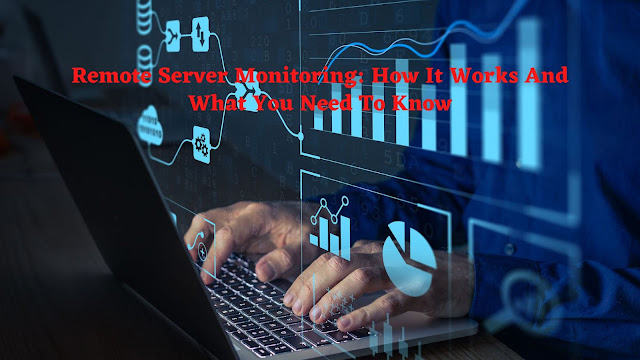Remote Server Monitoring: How It Works And What You Need To Know
As you likely know, remote server monitoring has become a fundamental tool for businesses of all sizes and industries. The question is, how do you take advantage of this newfound resource to keep your business running smoothly? Well, today we're going to talk about remote server management.
If you’re reading this, you probably already know a little bit about what remote server management is. But just in case, we’ll give you a quick refresher. Remote server management is the process of managing a server from a remote location. This can be done either through an on-premises solution or through a cloud-based solution.
There are many benefits to using remote server management, including the ability to manage servers from anywhere in the world, the ability to monitor and troubleshoot servers remotely, and the ability to save on hardware and energy costs.
When it comes to choosing a remote server management solution, there are a few things you need to keep in mind. First, you need to decide whether you want an on-premises or cloud-based solution. On-premises solutions are typically more expensive but offer more control and flexibility. Cloud-based solutions are often less expensive and easier to set up but may not offer as much control.
Next, you need to consider your needs. Do you need real-time monitoring? Do you need the ability to manage multiple servers? Do you need granular control over server resources? Once you know what you need, you can narrow down your options and choose the best solution for your business.
Types of Remote Server Management Tools
There are a variety of tools available for remotely managing servers. The type of tool you use will depend on the server operating system, your needs, and your preferences.
For Windows servers, some popular remote management tools include Microsoft Remote Desktop, TeamViewer, and Splash top. For Linux servers, popular tools include SSH, VNC, and RDP.
Each of these tools has its strengths and weaknesses. For example, Microsoft Remote Desktop is a free tool that comes with most versions of Windows, but it can be difficult to set up and configure. TeamViewer is a paid tool that is easy to use and set up, but it doesn't offer as many features as some other options.
The best way to decide which remote server management tool is right for you is to try out a few different ones and see which one works best for your needs.
How Does Remote Server Management Work?
Assuming you have a server that's already set up and accessible remotely, remote server management essentially boils down to four main areas: monitoring, automation, maintenance, and troubleshooting.
Monitoring is keeping an eye on server performance and activity, as well as keeping track of things like uptime and response times. This can be done manually or with the help of various tools and services.
Automation is using scripts or other tools to automate tasks that would otherwise need to be done manually. This can include things like backups, software updates, and report generation.
Maintenance is all the work that goes into keeping a server running smoothly. This includes things like patch management, security hardening, and tuning performance.
Troubleshooting is diagnosing and fixing problems when they come up. This can involve anything from investigating unusual spikes in resource usage to restoring downed servers.
How To Choose A Good Remote Server Management Tool For You?
There are a few things you need to consider when choosing a remote server management tool. Here are some factors to keep in mind:
1. Ease of use: The tool should be easy to use and navigate. It should have a user-friendly interface.
2. Functionality: The tool should have all the features you need. Make sure it can do what you want it to do.
3. Pricing: The tool should be affordable. Compare prices from different providers before making a decision.
4. Customer support: The provider should offer excellent customer support in case you run into any issues while using the tool.
Conclusion
If you manage a remote server, it's important to understand how remote server management works and what you need to know to do it effectively. In this article, we've gone over some of the basics of how remote server monitoring services works, as well as some of the things you need to keep in mind to do it properly. With this knowledge in hand, you'll be able to confidently manage your remote servers and keep them running smoothly.


Comments
Post a Comment